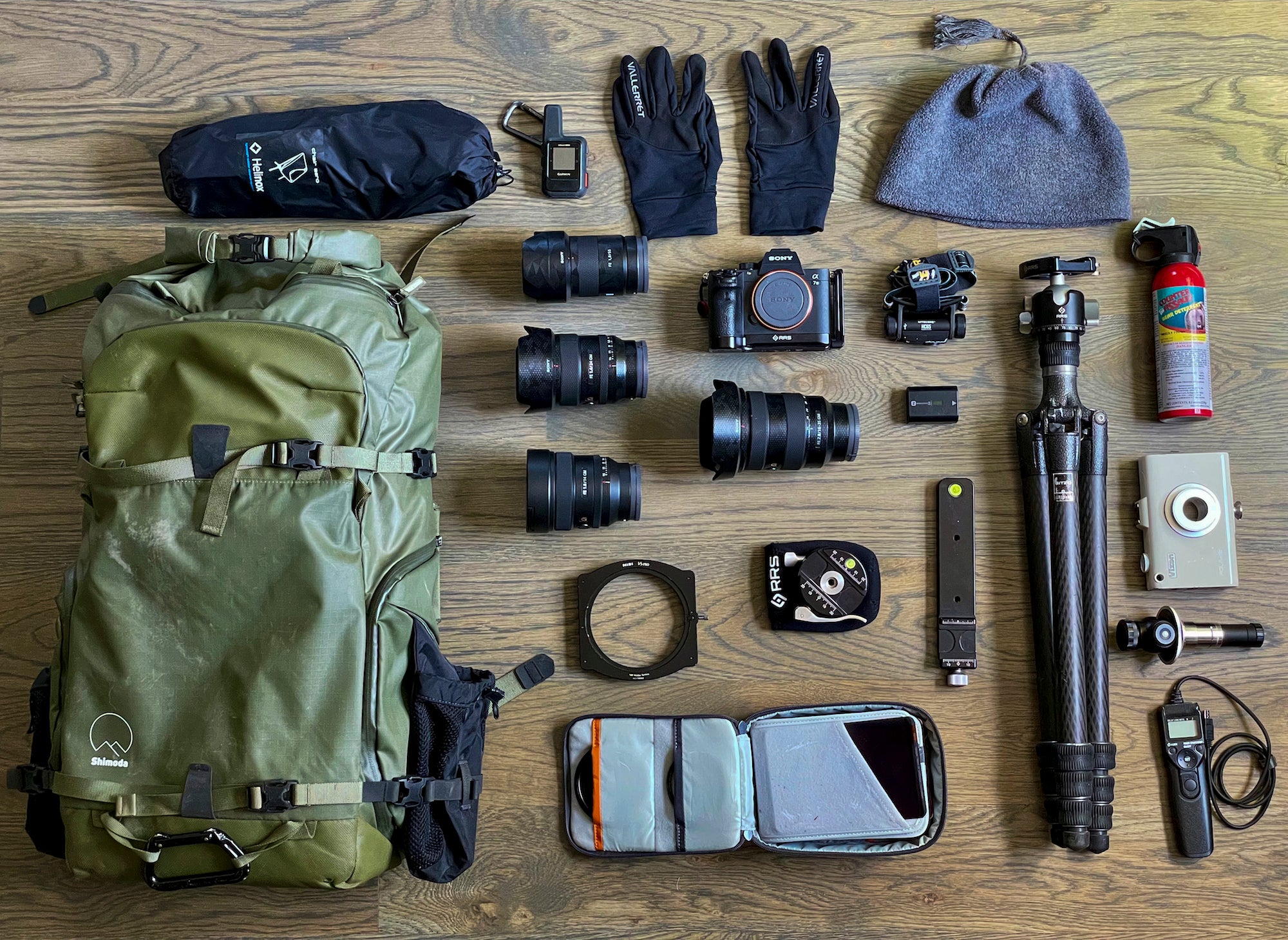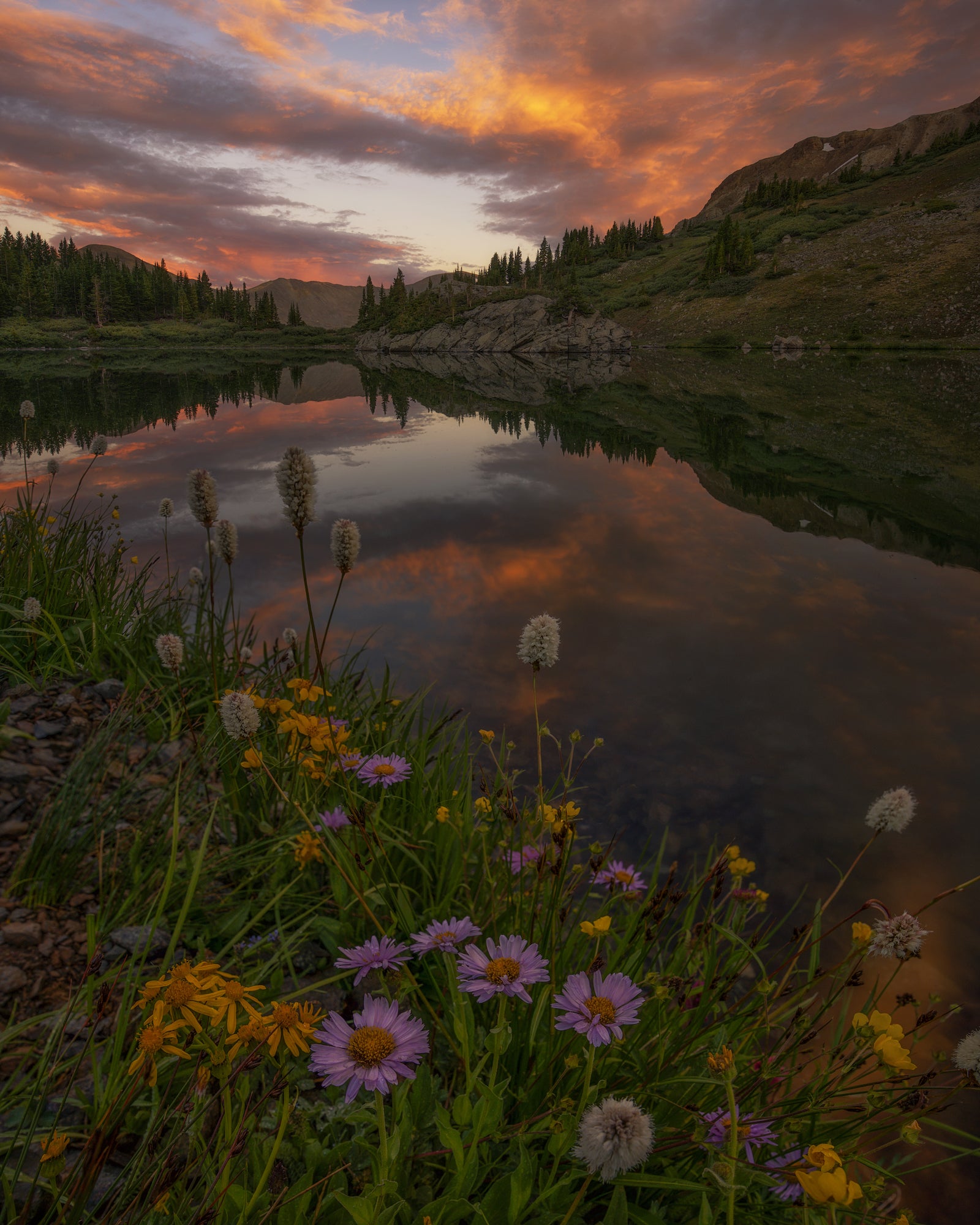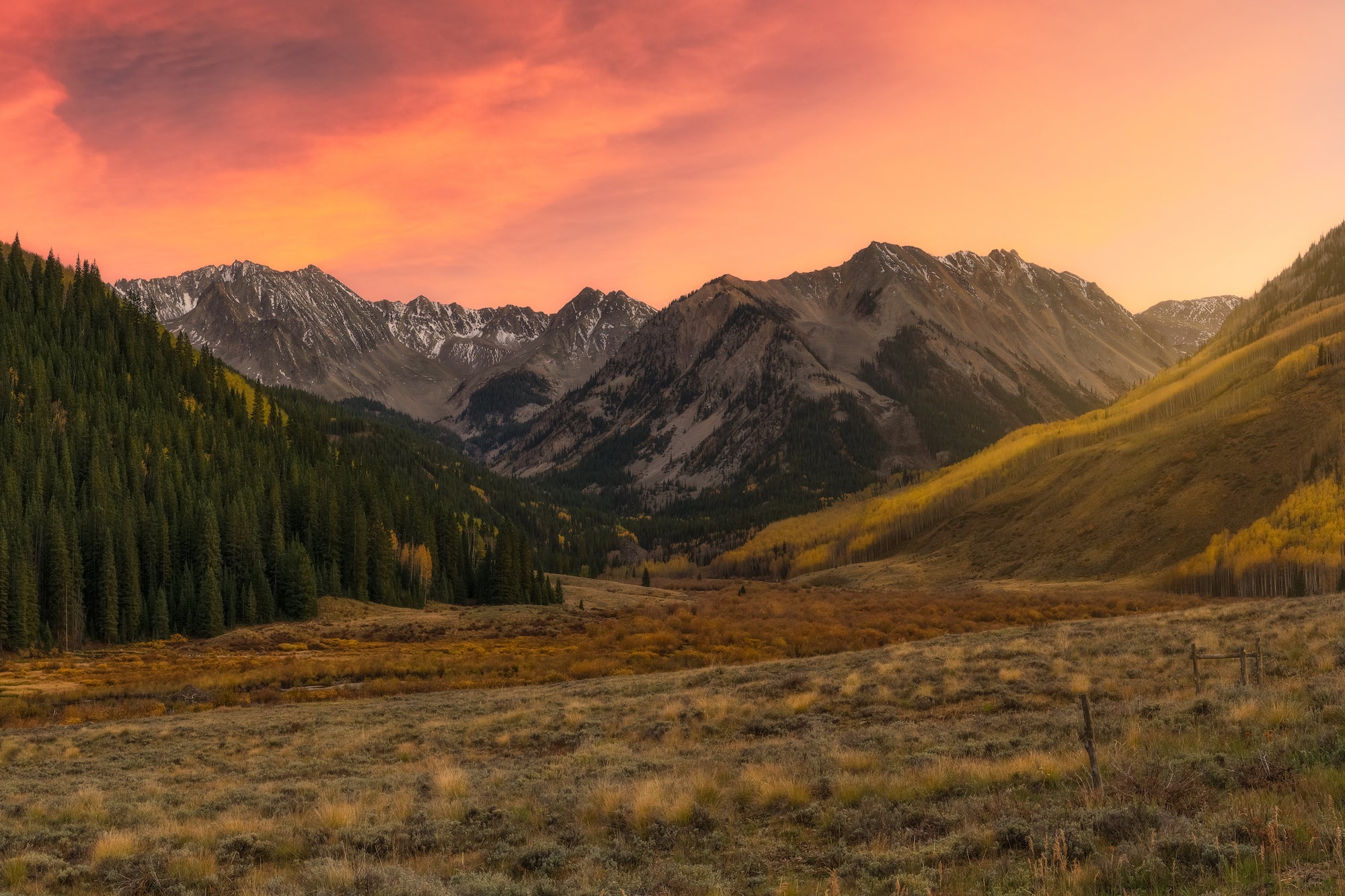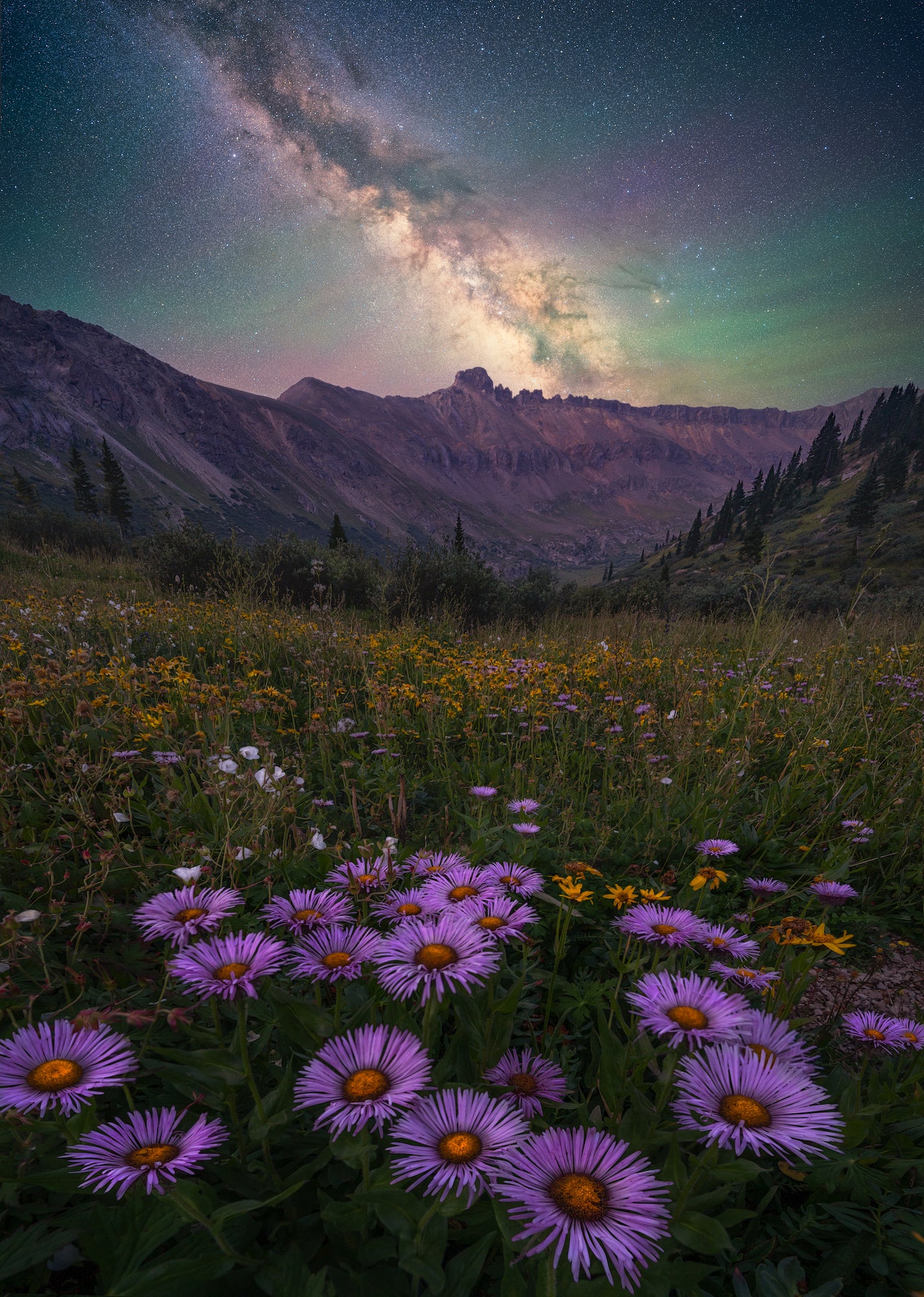Colorado-based photographer Brandt Ryder (@brandtryderphotography) creates stunning landscape and nightscape images. To get those crisp and colorful shots, he relies on one Sony Alpha camera and a variety of lenses. Below Ryder gives us a look inside his kit for landscapes and nightscapes.
Brandt Ryder (@brandtryderphotography) is a landscape and nightscape photographer living in Fort Collins, Colorado. He has had a passion for the outdoors since he was a child, and his photography is driven by a love for the creative process and the desire to inspire others to protect, appreciate and conserve the wild places and dark skies left on earth. Having only taken up photography in 2017, Brandt is a new kid on the block in landscape photography, but in that short time he has developed a unique style that relies heavily on techniques that create depth and dimensionality to his images. We caught up with Brandt to understand how he balances his camera bag to simultaneously meet his landscape and nightscape photography needs.

Landscape and nightscape photographer Brandt Ryder shares the Sony Alpha camera and Sony lenses he uses for his stunning photography.
Camera
Sony Alpha 7 III: My introduction to Sony cameras was the A99 II, but I quickly realized that when hiking to find unique landscape and nightscape compositions every pound matters. It turns out the best shots are rarely found by the side of the road. In 2018, to shave weight off my camera bag I switched from the A-mount to Sony mirrorless E-mount system. The Alpha 7 III has been my workhorse camera ever since. The Alpha 7 III provides the perfect blend of resolution, low-light performance, and dynamic range. The 24mp sensor has sufficient resolution for high quality prints while not compromising pixel-size on the sensor (light sensitivity), a key for astrophotography. The file sizes are manageable for focus stacking, stacking star exposures for noise reduction, and for large-stitched panoramas. The Alpha 7 III also has incredible dynamic range for high-contrast scenes reducing the need for bracketing. As a rule of thumb, I tend to under-expose my images and it's nice having confidence that the Alpha 7 III can always recover detail in the shadows. Finally, the Alpha 7 III has some features that make it an astrophotographer’s best friend. In particular, the “bright-monitoring” feature makes framing and shooting low-light compositions infinitely easier.

Photo by Brandt Ryder. Sony Alpha 7 III. Sony 16-35mm f/2.8 G Master, ⅙-sec., f/13, ISO 100
Lenses
Sony 16-35mm f/2.8 G Master: This lens hardly ever leaves my camera body. The focal length diversity makes it highly versatile from wide-angle vistas to tighter more intimate subject shots. Unlike most zooms the 16-35mm doesn’t compromise sharpness, producing razor sharp images edge to edge regardless of the aperture.

Photo by Brandt Ryder. Sony Alpha 7 III. Sony 16-35mm f/2.8 G Master. 1/25-sec., f/13, ISO 100
Sony 24mm f/1.4 G Master: In my opinion, fast prime lenses are the key to successful nightscapes and long-exposure photography. Having a lens that can resolve detail while remaining sharp wide open is a game changer because it allows for shooting at lower ISO with reduced noise in the image. The 24mm GM shines at f/2 with pinpoint sharp stars and virtually no coma.

Photo by Brandt Ryder. Sony Alpha 7 III. Sony 24mm f/ 1.4 G Master. Foreground: 30 secs., f/11, ISO 400. Sky: 90 secs., f/2, ISO 800
Sony 55mm f/1.8: Don’t let its size fool you, the tiny but mighty 55mm is the sharpest lens I own. I barely know it’s in my bag. I reach for the 55mm when I’m looking to punch in and get some extra detail, especially for panoramas.

Photo by Brandt Ryder. Sony Alpha 7 III. Sony 55mm f/1.8, 2-secs., f/13, ISO 100
Sony 14mm f/1.8 G Master: When Sony released the 12-24mm GM I thought I had found my dream lens, but the size and weight immediately had me second guessing. When the 14mm GM arrived, it was like a gift from the heavens. This lens is absolutely perfect in every way, from size to performance. I reach for my 14mm when I’m looking to create massive depth of field and get extremely close and personal with my foreground.

Photo by Brandt Ryder. Sony Alpha 7 III. Sony 14mm f/1.8 G Master, Foreground: 2 secs., f/9, ISO 500. Sky: 13-sec., f/1.8, ISO 6400
Accessories
Shimoda Action X50: Let’s face it, carrying heavy camera gear isn’t all that much fun. The Shimoda Action X series actually makes the experience moderately more pleasant.
Gitzo Carbon-Fiber Tripod GT2645T: Weight and Stability are the most important features of a good tripod. My Gitzo has been through thick and thin with me and nearly saved my life on more than once occasion.
Really Right Stuff BH-40: The RRS ball head just works. Plain and simple.
Really Right Stuff Pan-head PC-LRB and Nodal Slide: I have grown to love doing panoramas and these two pieces of RRS equipment are essential.
Vixen Polarie Star Tracker and Polar Alignment Scope: Copernicus would have loved a star tracker. These devices match the earth's rotation to enable super long exposures of the stars with no trailing.
NiSi Filter Holder and Filters: Filters filter light and they work (most of the time).
Nitecore Headlamp HC65: A reliable flashlight with multiple modes (especially red light) is a must have for sunrise, sunset and astro shooting
Garmin InReach Mini: Allows the spousal unit to sleep at night knowing that help is only a text message away.
Helinox Chair Zero: It turns out human legs get tired after standing in the dark for hours.
Warm Clothes: Being ready and willing to wait around regardless of the weather is the key to capturing amazing light.
Bear Spray: For the rogue zombie or unruly wildlife.
See more of Brandt Ryder's work on his Alpha Universe Profile and on Instagram @brandtryderphotography.



